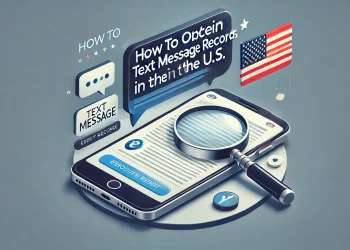In the digital age, surveys have become essential for businesses and organizations to gather valuable insights and feedback from their target audience. While various survey methods are available, text message and SMS surveys have gained significant popularity due to their accessibility, convenience, and high response rates. In this article, we will explore the benefits of text message surveys and provide a step-by-step guide on creating and sending them effectively.
Why Choose Text Message Surveys?
Text message surveys offer several advantages that make them compelling for gathering feedback and insights from your target audience. Here are the key reasons why you should choose text message surveys:
Wide Reach:
Text surveys have an extensive reach, as nearly everyone today owns a mobile phone and has access to SMS capabilities. This makes them an effective method to connect with a diverse range of respondents, ensuring a broader sample for your survey.
Instant Delivery:
One of the advantages of surveying via text messages is instant delivery. Text messages are delivered instantly, ensuring your survey reaches the respondents promptly. This immediacy increases the likelihood of getting timely responses, especially for time-sensitive surveys.
High Open Rates:
When it comes to open rates, text message surveys outperform emails or other communication channels. Most people open text messages within minutes of receiving them, increasing the chances of your survey being seen and completed. This higher open rate translates into a better response rate for your surveys.
Mobile-Friendly:
With most people using smartphones, ensuring that your surveys are mobile-friendly is important. Text message surveys are designed to be easily accessed and completed on the go, making it convenient for respondents to participate and increasing the chances of higher completion rates.
Personalized Approach:
To engage respondents and encourage genuine feedback, text message surveys offer a personalized touch. By addressing respondents by their names and adopting a conversational tone, you can create a more engaging survey experience. This personalization helps establish a connection with respondents and makes them more willing to provide honest and valuable feedback.
Step-by-Step Guide to Sending Text Message Surveys:
Step 1: Define Your Objectives
Before creating a text message survey, clarify your objectives and the information you wish to gather. Determine the target audience, the purpose of the survey, and the specific questions you want to ask.
Step 2: Choose a Survey Tool
Select a reliable survey tool that supports text message surveys. Many online survey platforms offer SMS integration and provide user-friendly interfaces to design, distribute, and analyze your surveys. Some popular options include SurveyMonkey, Typeform, and Google Forms.
Step 3: Craft Clear and Concise Questions
Keep your questions clear, concise, and easy to understand. Remember that you have limited characters for each text message, so make sure your questions are short and straightforward. Avoid using jargon or complicated language that might confuse respondents.
Step 4: Consider Message Length and Frequency
Since text messages have character limitations, ensure your survey questions fit within a single message. If your survey requires more questions, break them down into multiple text messages, but be mindful of not overwhelming respondents with too many messages. Survey fatigue can lead to lower response rates.
Step 5: Personalize Your Messages
To increase engagement, personalize your text messages by addressing respondents by name and using a friendly and conversational tone. Ensure the messages are polite, clear, and include a brief introduction to the survey’s purpose. This personal touch can enhance the overall survey experience for respondents.
Step 6: Provide Clear Instructions
Include concise instructions on how respondents can participate in the survey. Provide a clear call-to-action, such as “Reply with A, B, or C,” or a short URL leading to the survey, if applicable. Make it easy for respondents to understand and follow the instructions.
Step 7: Test and Review
Before sending out your text message survey, thoroughly test it to ensure everything works smoothly. Review the survey questions, instructions, and additional information to eliminate potential errors or confusion. A well-tested survey will provide a better user experience and more reliable data.
Step 8: Send the Survey
Once you are confident in your survey, it’s time to send it out. Utilize your chosen survey tool’s SMS integration feature to send text messages to your target audience. Ensure you have obtained the necessary consent and have a database of valid phone numbers to ensure compliance with privacy regulations.
Step 9: Analyze the Responses
After completing the survey, analyze the responses using the tool’s reporting and analysis features. Look for trends, patterns, and valuable insights that can help you make informed decisions and improvements based on the feedback received. Analyzing the responses will allow you to extract meaningful data and draw actionable conclusions.
Step 10: Follow up and Thank Your Respondents
Lastly, following up and expressing gratitude to your respondents for their participation is crucial. Consider sending a personalized thank-you message to show appreciation and maintain a positive relationship with your audience. This gesture not only acknowledges their contribution but also encourages future engagement.
Power Textor – A Preferred SMS Marketing Tool for Text Message Surveys
When it comes to sending out bulk survey messages through SMS marketing, having the right tool can make a significant difference in the success of your campaign. One preferred option that stands out is Power Textor. With its robust features and user-friendly interface, Power Textor offers a seamless experience for businesses and organizations looking to conduct large-scale text message surveys.
With its user-friendly interface, personalization options, bulk message-sending capabilities, two-way communication features, robust analytics, and compliance with data security standards, Power Textor empowers businesses and organizations to conduct successful and impactful text message surveys. By utilizing Power Textor as your preferred SMS marketing tool, you can unlock the full potential of your survey campaigns and gather valuable insights from your target audience.
Conclusion
Text messages and SMS surveys are powerful tools to collect feedback and insights from your target audience. Their wide reach, instant delivery, high open rates, and mobile-friendly nature offer numerous benefits for businesses and organizations. Following a step-by-step approach, you can effectively create and send text message surveys, ensuring high response rates and valuable feedback that can drive your decision-making process and help you improve your products, services, or campaigns.














